Applications and Implications
Table of content:
What will it do?Who's done what beforehand?
What will you design?
What materials and components will be used?
Where will come from?
How much will they cost?
What parts and systems will be made?
What processes will be used?
What questions need to be answered?
How will it be evaluated?
What will it do?
My final project is about detecting water leakage from the taps/faucets. The issue is that in public places, due to constant use of taps, they
are bound to get damaged because of which water will start to leak. Sometimes people keep the tap partially/fully open. I made a device
that detects the running water and gives instant feedback through LED and buzzer and also stores the data,
this is what my device will do:
since the running water can be in the form of usage and leakage, we need to differenciate between them. To
do that i am using an ultrasonic sensor to detect the human presence,

so if the range of ultrasonic sensor is upto 60-70 centimeters and the water is running then it means that there is a person nearby and
so the microcontroller will consider this situation as usage and won't give any feedback or store the data. If
the range of ultrasonic sensor is more than 60-70 centimeters and the water is running then it means that there is no person nearby and
so the microcontroller will consider this situation as leakage and it will start storing the data in the form of drop and stream.
To detect the running water, i am using a water sensor that i mnade from screw connector and needle,

every odd pins and even pins are connected together and the odd pin and even pin is connected to the YL-69 moisture detector module. The
YL-69 moisture detector module checks the resistivity/DC conductivity so when the water falls onto the water sensor, the resistivity
will decrease and the microcontroller will know the presence of the water.
The device will keep the data for drops and stream separately and show it in the OLED and also send the data to the thingspeak through
wifi,
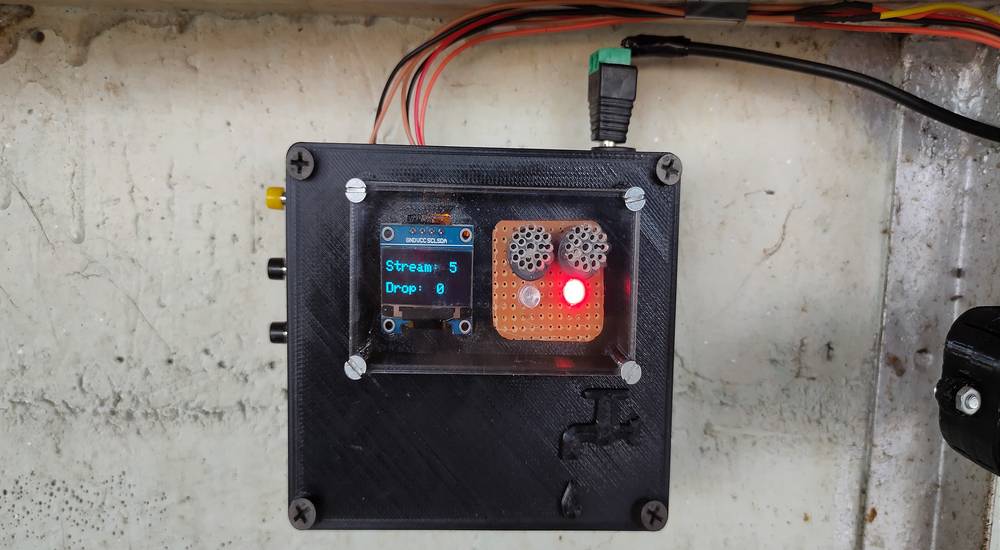
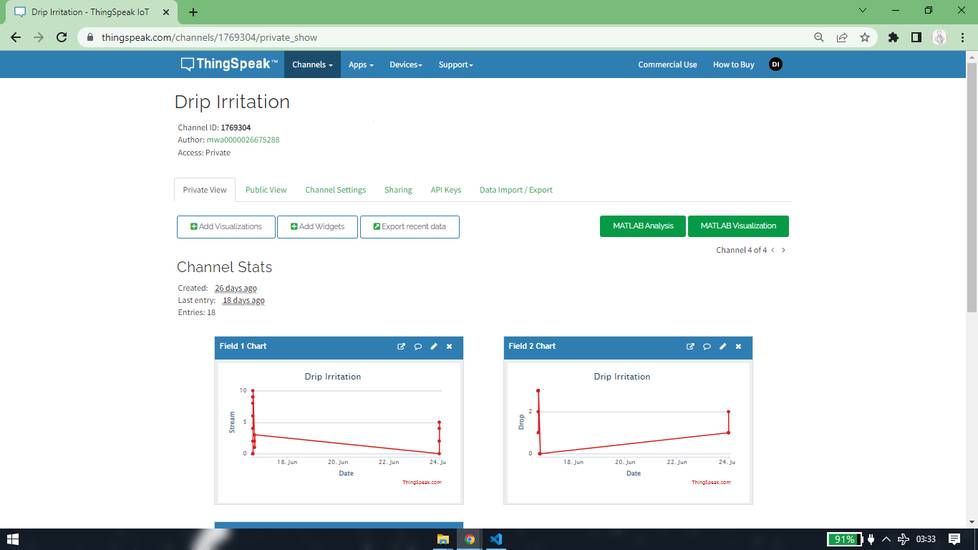
and for the instant feedback it will indicate through LED and buzzer.
I am using a custom made printer circut board with esp32 IC as the microcontroller,
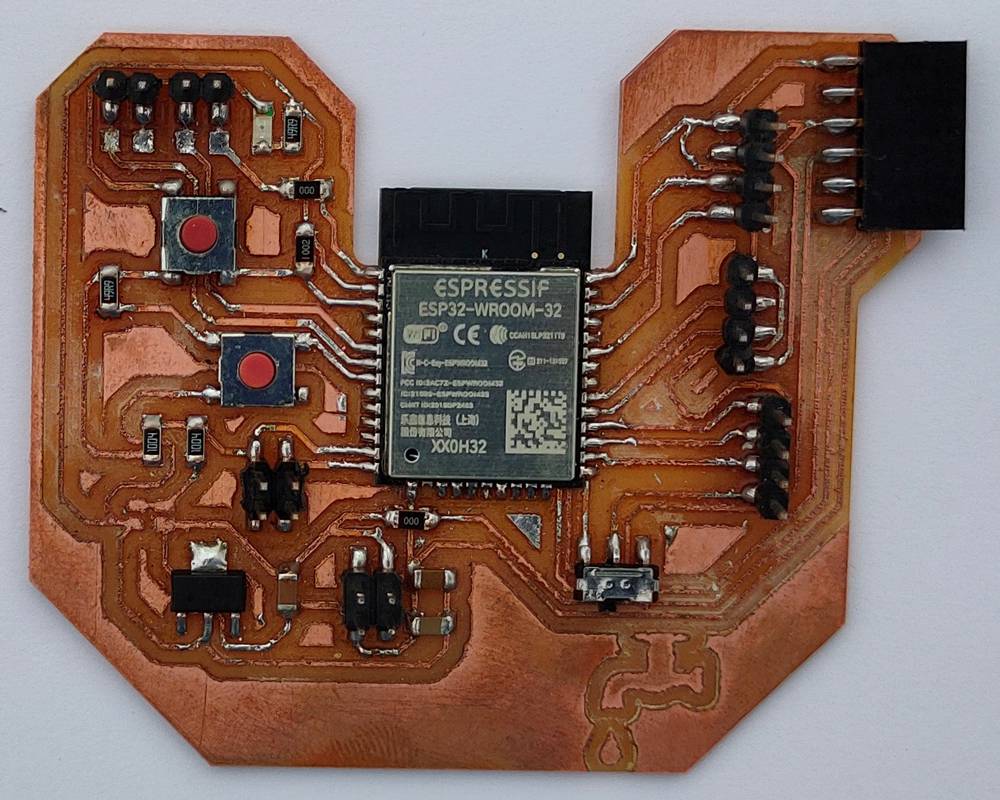
Who's done what beforehand?
Before joining Fab Academy, i had worked on this project. At that time i had the idea that i want to detect the running water in the form
of drops and stream. So with the help of my friend, Mithilesh Barasara, we made a custom through hole PCB,
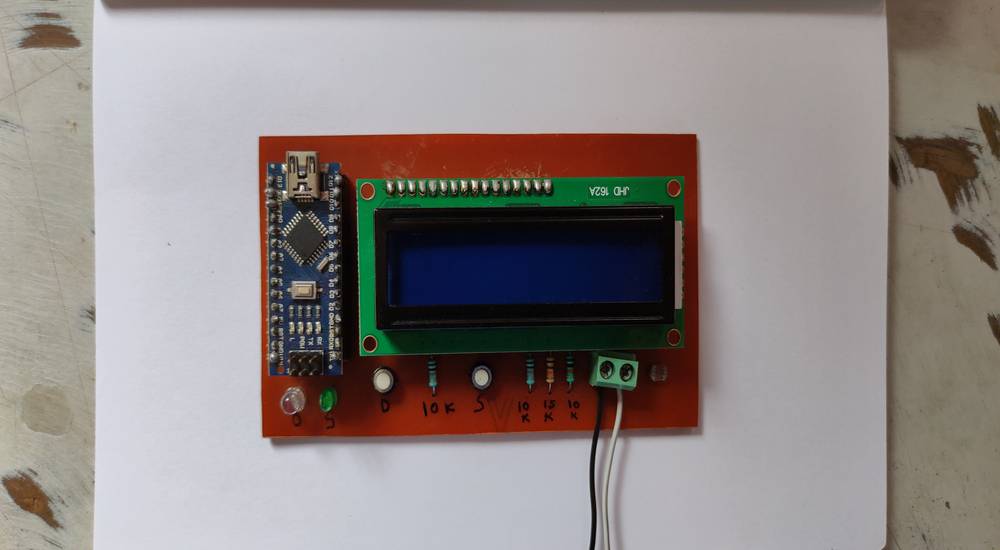
Here is what the first version of the project does:
- It detects the running water with the help of voltage divider that calculates resistivity,

I tried using two set of mesh wire to connect to the
screw connector, but the result was not very accurate because sometimes the water would either got stuck between two mesh wire or the
water just wont get detected,
- to detect the human presence we were using photoresistor/LDR sensor. I plaaned to install the photoresistor(receiver) on one end of the washbasin
and install the light(transmitter) on the other end of the machine. So if there is a person nearby, the light being received by the photoresistor
will break and the microcontroller will know there is person nearby and vice-a-versa.
- we were using a LCD without I2C module to display the data of stream and drops,
- we were using Arduio NANO as the microcontroller.
- before we stopped working on the project, the device we made was sucessfully able to store the data of drops and stream separately
considering the behaviour of the leakage, able to display the data onto the LCD, able to give instant feedback through LED and able to differenciate
between usage and leakage through the photoresistor. What was remainig was to design a water sensor to connect it to the screw connector mounted
on the custom made through hole PCB.
What will you design?
Firstly i designed the final project board using Autodesk Eagle,
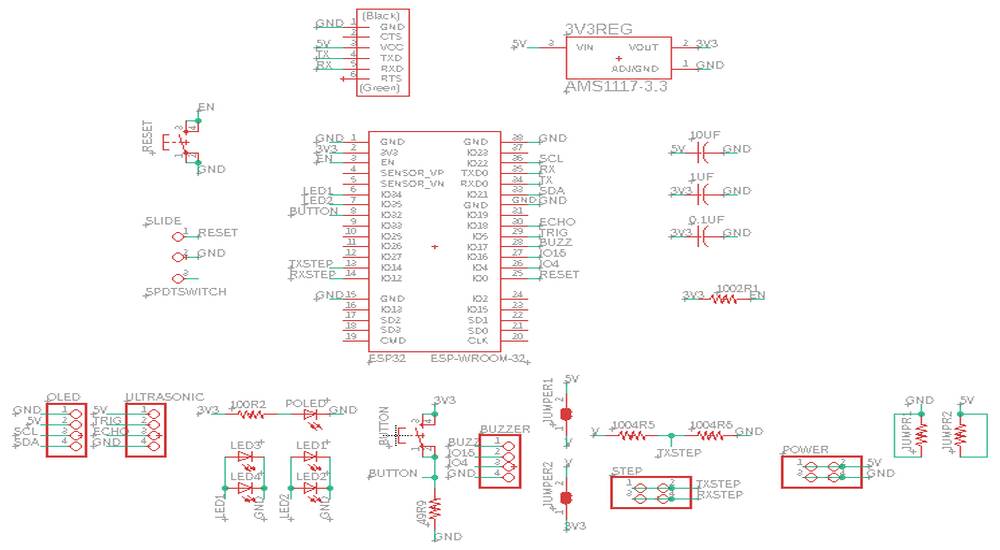
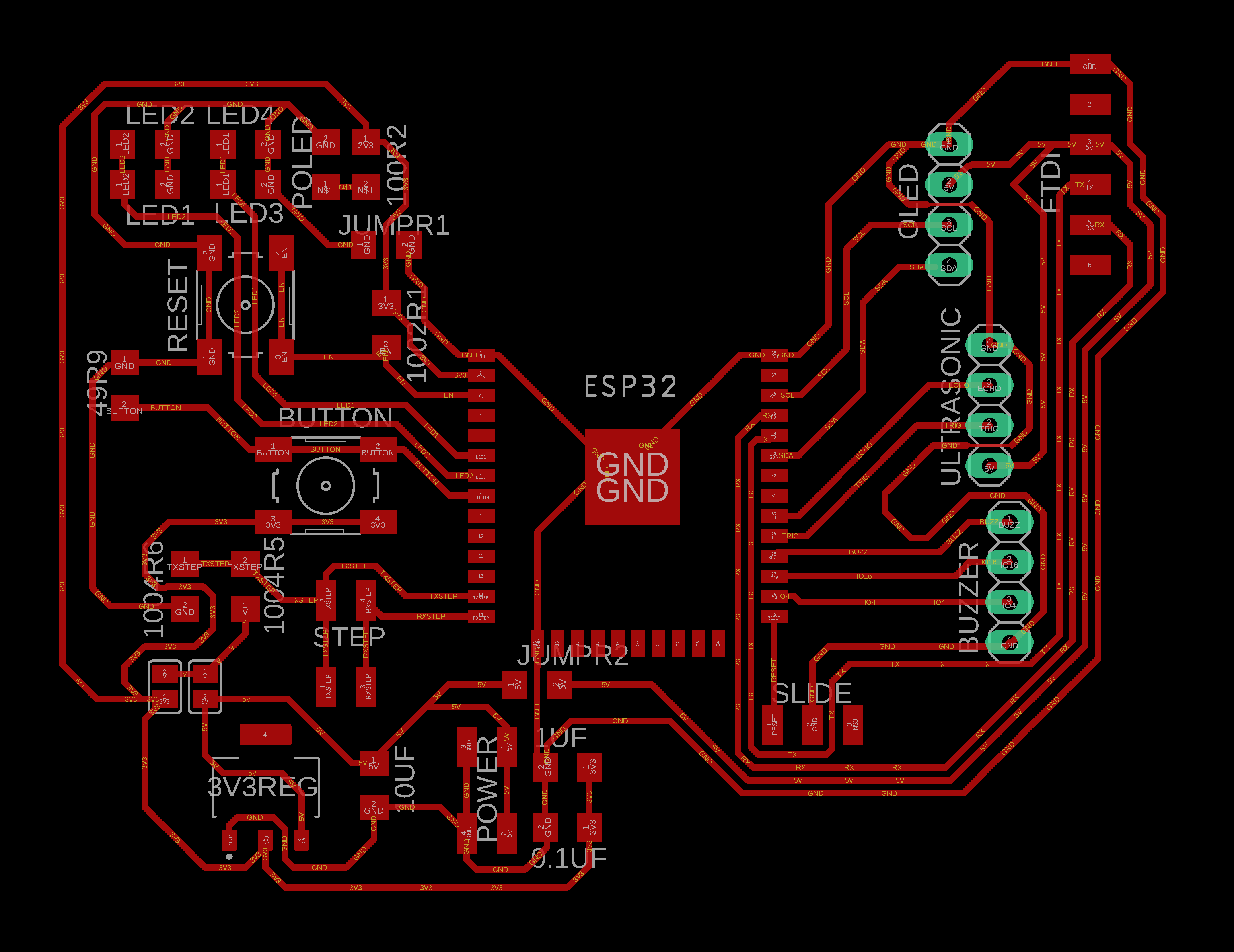
i then designed the case and holder for the ultrasonic sensor,
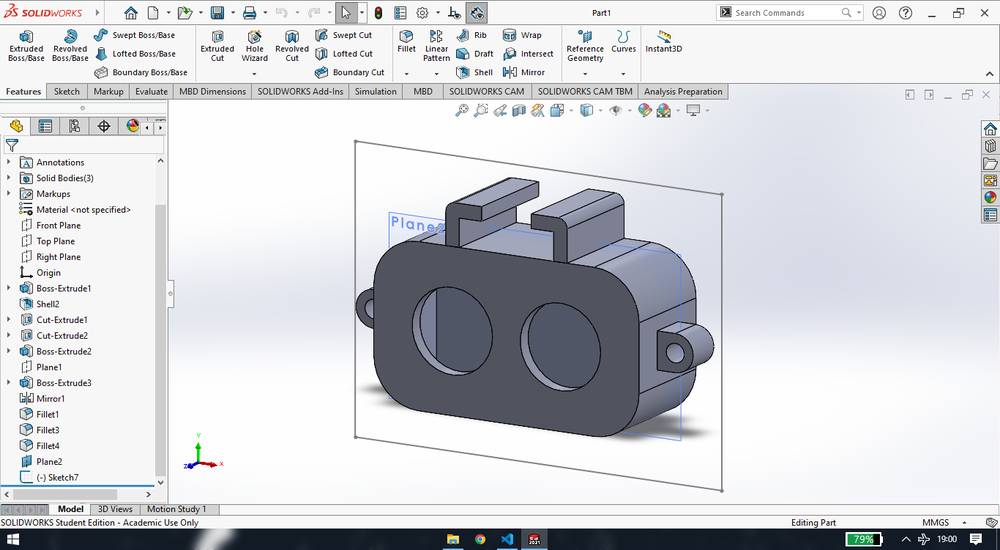

i then designed the case for the water sensor,

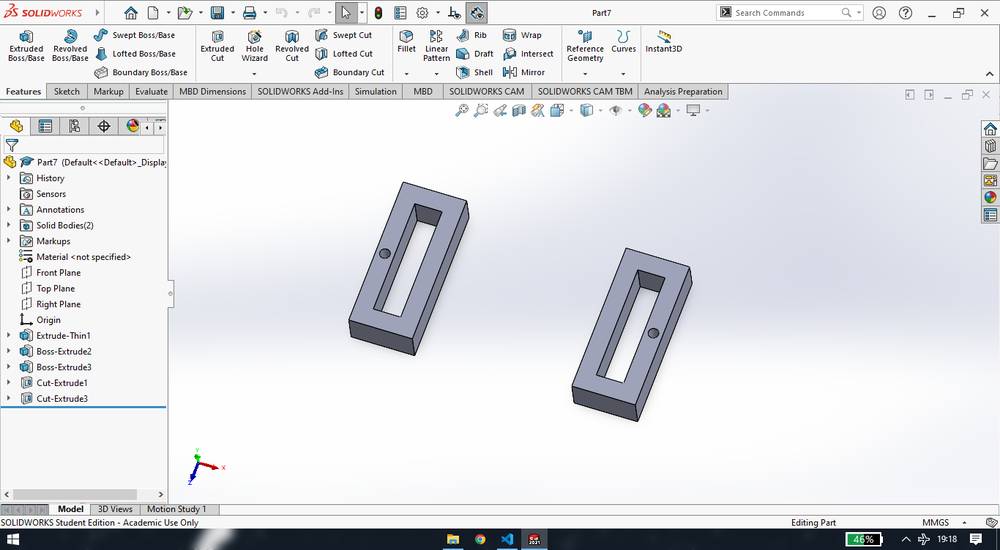
i later had to change the needle which was shorter so i had to re-design the base part of the case,
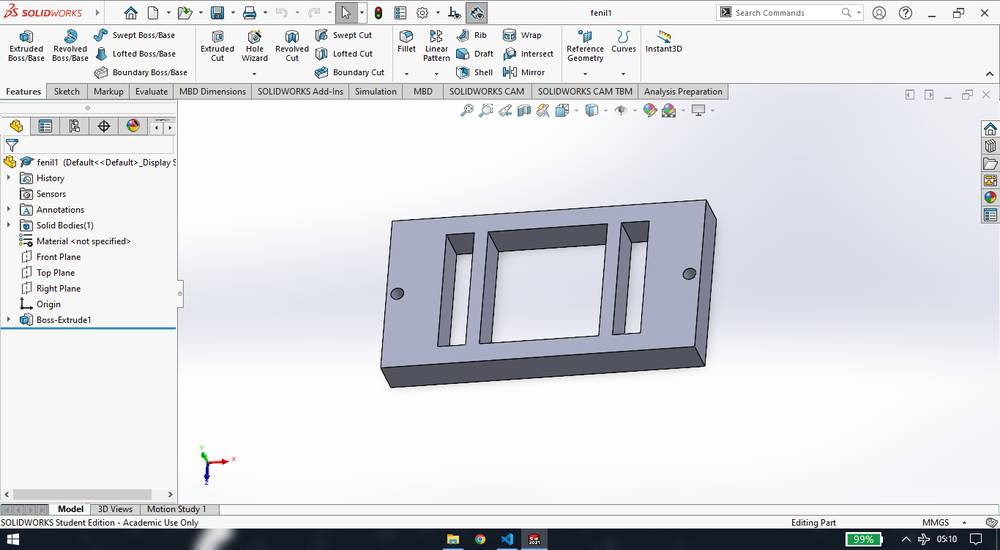
i designed the shielf for OLED and LED-buzzer and some washer/spacer rings for the project board to lift,
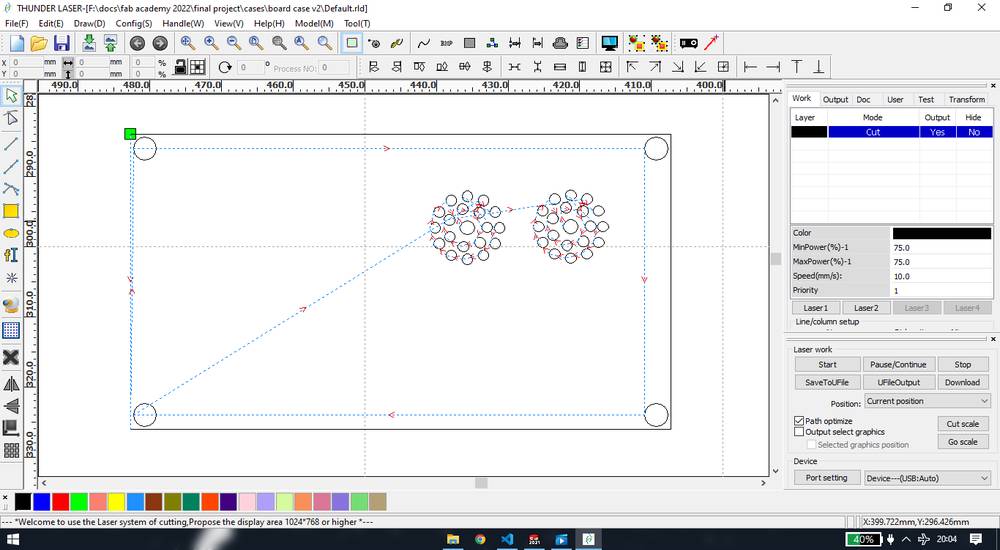
I then finally designed the case for my final project board,
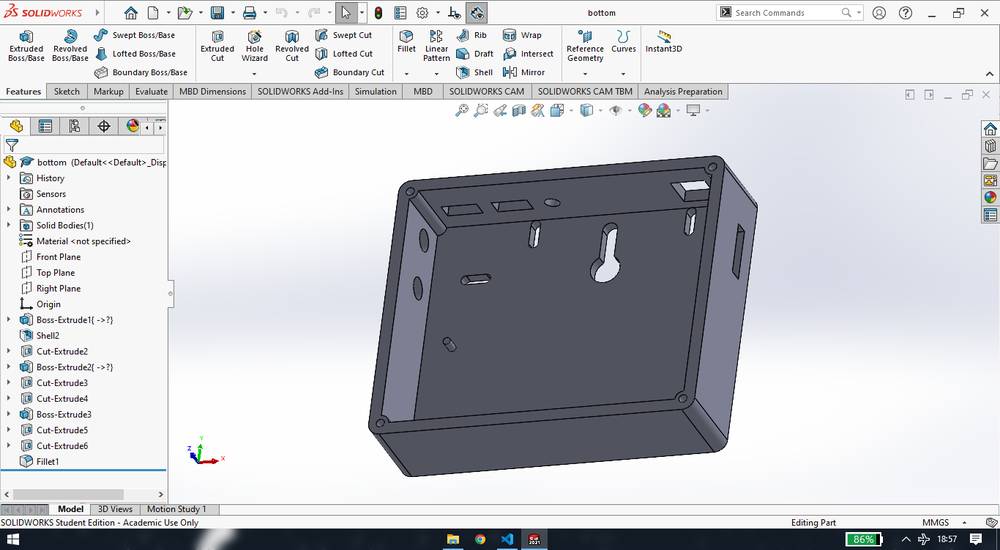

What materials and components will be used? Where will come from? How much will they cost?
Refer the bill of material:
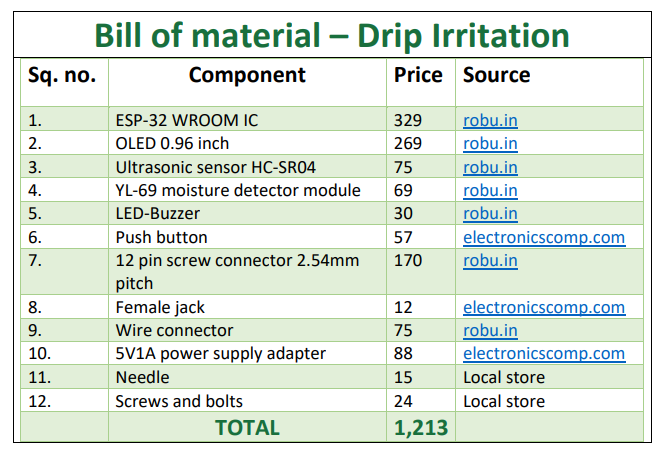
The Bill of material doesn't include,
all the SMD components used for making the esp32 board,
200 grams of filament used for 3D printing,
Acrylic sheet used for making the shield for OLED and LED-Buzzer and for makingthe studs/washer.
You can download the word file for the links of each component from here:
Bill of material
What parts and systems will be made?
To detect the running water, i made a water sensor with the help of screw connector and needle,
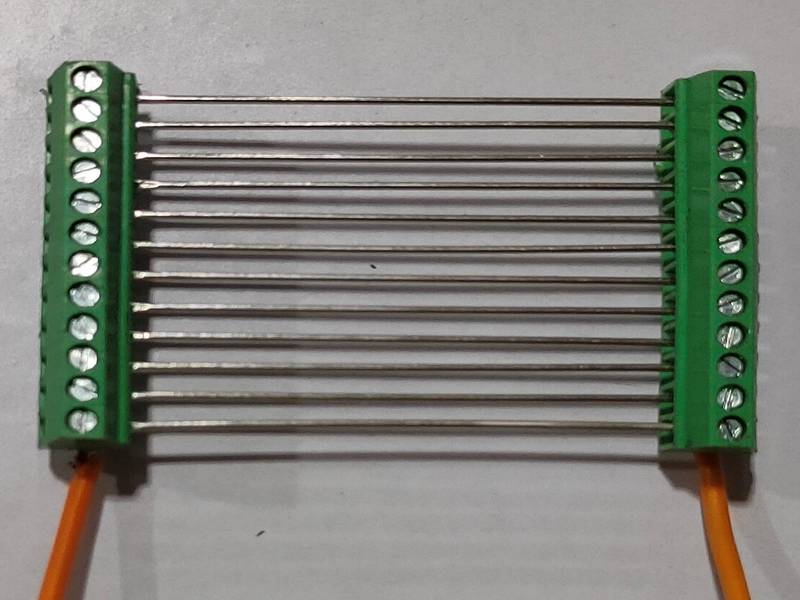
I also made a case so that it directly mounts onto the tap,

here is the working of the water sensor,
I also designed and made an embedded system: a custom made printed circuit board interfacing all the sensor that are going to be used
for the final project


What processes will be used?
computer aided design
for: making the design of the cases for the components and project board
CAD software used: solidworks
CAM software used: fractory
computer controlled cutting
for: cuttint the shield for the OLED and LED-buzzer
CAD software used: solidworks
CAM software used: RDWorks
Electronis production
for: milling the circuit board for the project
CAD software used: Eagle
CAM software used: Vpanel
3D Printing
for: fabricating the cases for the components and project board
CAD software used: solidworks
CAM software used: fractory
Electronics design
for: designing the custom board for the project
CAD software used: eagle
Embedded programming
for: programming the project board
software used: Arduino IDE
Input/Output device
for: deciding what input and output devices to use for the final project
Interface and application programming
for: to send the data of leakage to a cloud through wifi
software used: Arduino IDE
tools used: ThingSpeak
What questions need to be answered?
Here are all the questions i had at the initial stage of working on this project,
1. what sensor do i need to use to detect human presense? Is there any sensor where the transmitter and receiver are on a
single module?
2. Should i use LCD with the I2C module to display the data or should i go for something less bulky like OLED?
3. How can i make the water sensor which detects drops and stream separately and also water doesn't stick/clog
onto the water sensor?
4. How and where can i send the data of drop and stream thorugh wifi?
5. what IC/microcontroller should i select for my final project?
How will it be evaluated?
Currently i have installed the system in the kitchen of vigyan ashram. I will observe how the system is behaving with the usage and leakage of
the water like if there is any need to tweak the range of ultrasonic sensor, if the water is sticking onto the water sensor, if there is
any flaw in the code which is making the system ineffective. Considering all this
i will make some changes if necesary. In the next spiral, i will add water sensor on all taps of the wahsbasin and will try to get the
data of each taps separately.
P.S. All the answers are in the past tense and not future because i am writing this assignment after the completion of final project and it's
documentation.
Drip Irritation by Fenil Chandarana is licensed under Attribution-NonCommercial-NoDerivatives 4.0 International